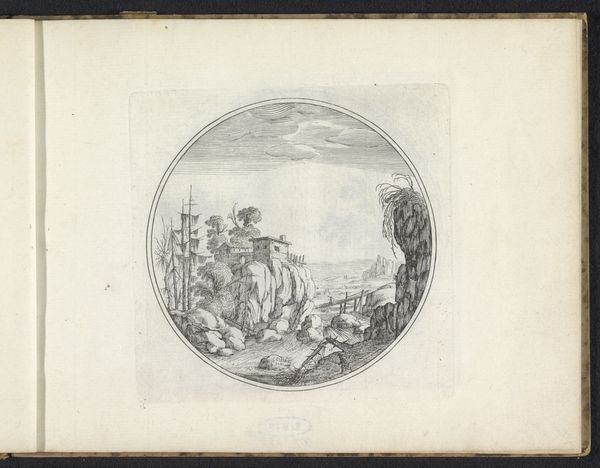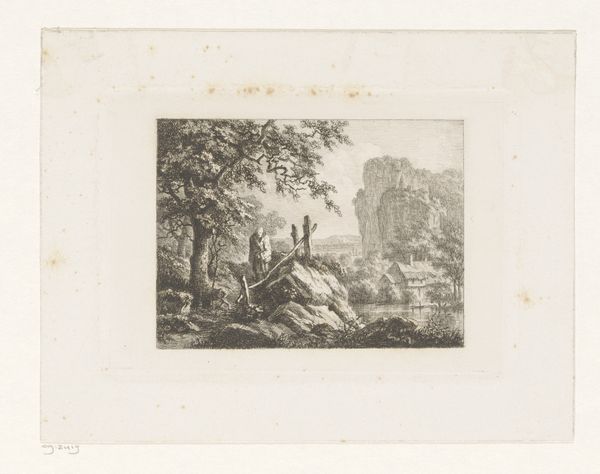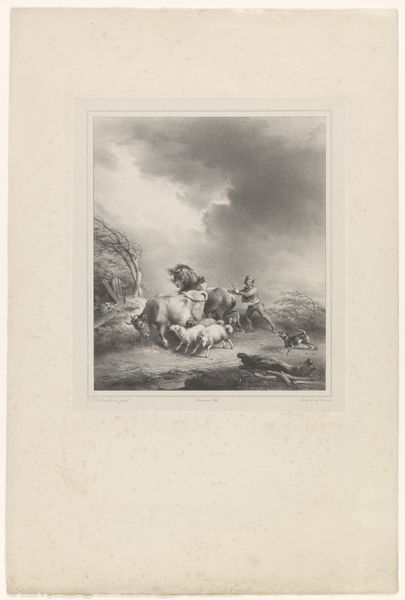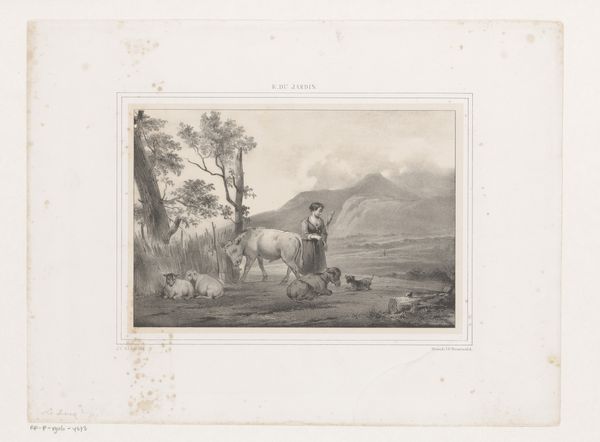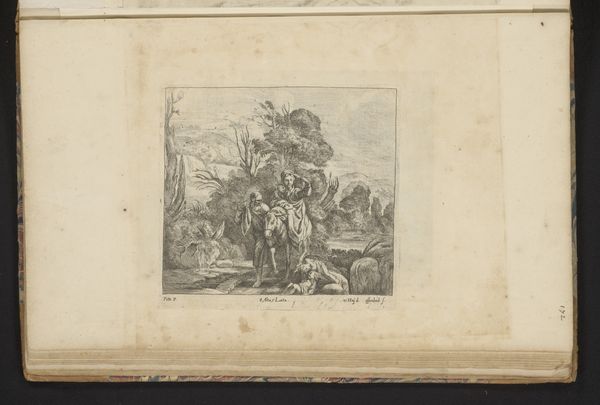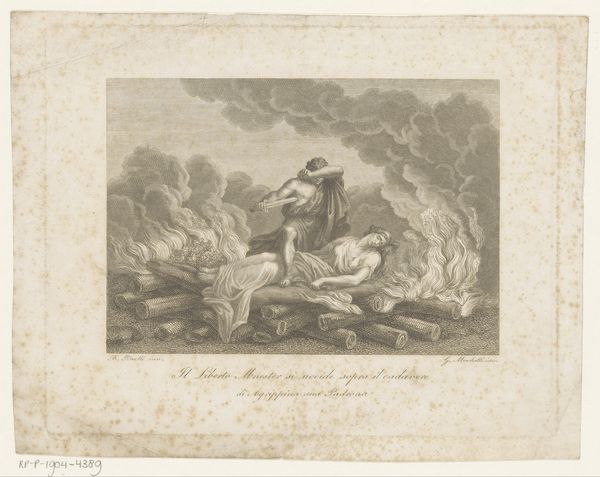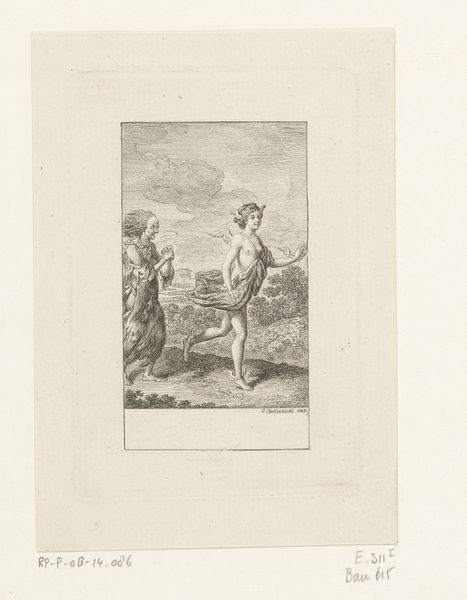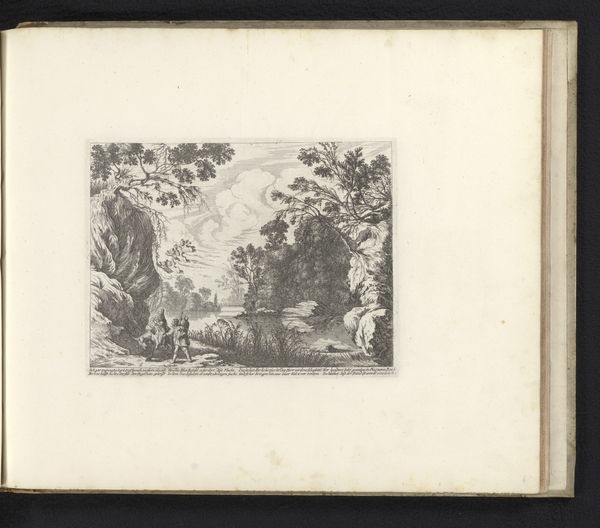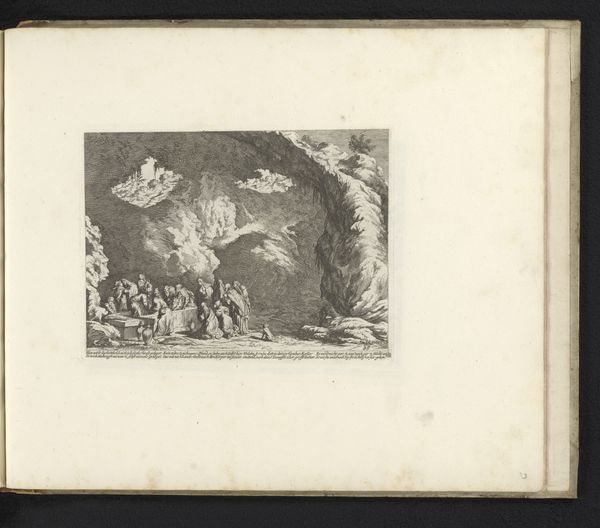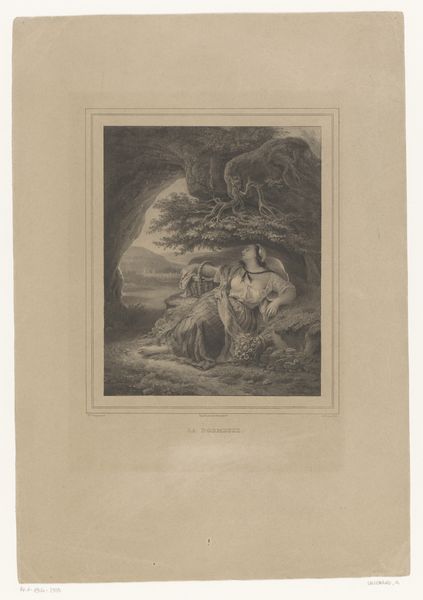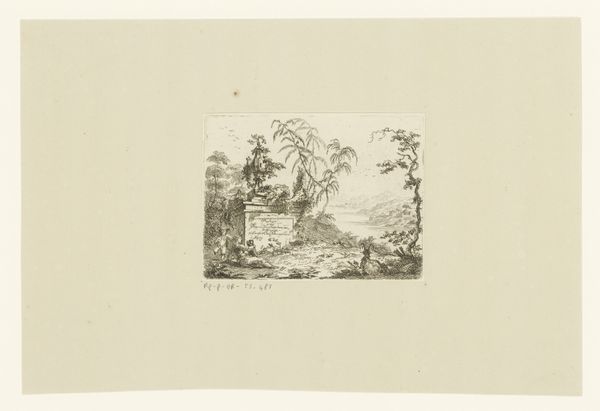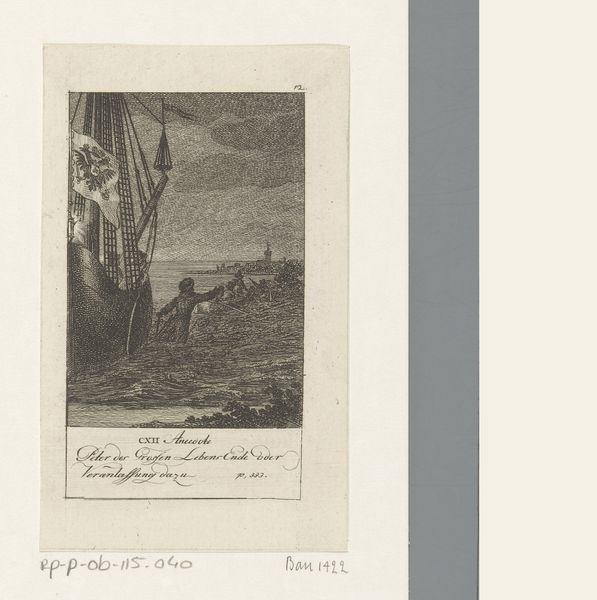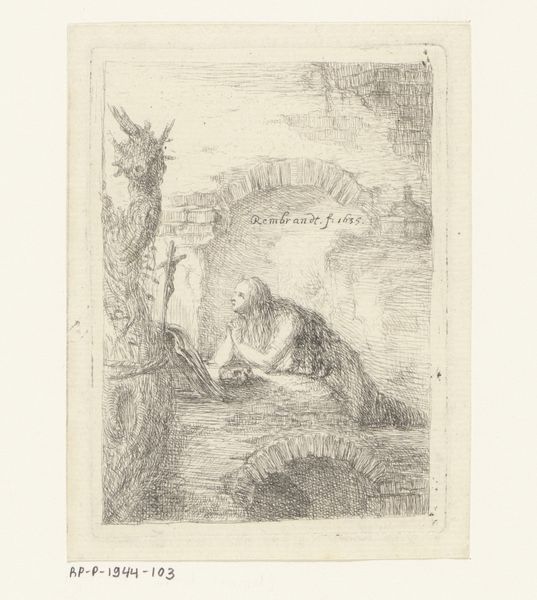
drawing, print, engraving
#
drawing
#
narrative-art
# print
#
landscape
#
figuration
#
romanticism
#
history-painting
#
engraving
Dimensions: height 111 mm, width 75 mm
Copyright: Rijks Museum: Open Domain
Curator: Daniel Nikolaus Chodowiecki’s 1794 engraving, "Theseus Leaving Ariadne on Naxos," is on display here at the Rijksmuseum. Its lines carve a striking image onto the paper. Editor: It's… intensely sad, isn't it? The vast ocean swallowing the tiny ships, while Ariadne claws at the cliff, desperate and utterly alone. Curator: Exactly. Chodowiecki used engraving techniques to create contrasting tones, influencing how audiences engage with themes of abandonment and isolation, reflecting the romanticized style of the time. Consider the socioeconomic factors that allowed for such prints to circulate, creating a market for narrative art. Editor: Oh, I hadn't thought about its market appeal. I’m mainly stuck on her vulnerability and the unfairness of the narrative! I keep imagining the scratching sound of the needle creating those fine, precise lines. Did the method limit expressions in any way? Curator: The precision enabled meticulous details, but demanded extensive labor. Each line represented a conscious decision in the distribution of labor involved in production, as engraving had both its aesthetic appeal and production costs to consider. Also, engravings allowed for replication; this image could reach a broader public. Editor: The reproducibility almost underscores Theseus' cold calculation. He knows this heartbreak can be, will be, witnessed, and he does it anyway. There's also that craggy cliff formation, right above Ariadne… Does that suggest something else? Like she's about to be crushed, like destiny closing in? Curator: It could reference both her isolation from and her deep entanglement with nature. But in terms of consumption, viewers bought into this idea, making prints of landscapes with narrative qualities like this both profitable and reflective of popular sensibilities. Editor: Well, thank goodness the narrative lives on and allows people to talk about feelings. This little scene speaks to big questions. Now I want to know more about the paper, the ink—I wonder if we could trace it back to its source? Curator: We might, one day. It all forms part of a material history, after all. Editor: Until then, I guess, Ariadne will keep on staring after that fleeing ship and its treacherous captain, ensuring her story persists in our minds. Thanks, Ariadne! Thanks, Chodowiecki!
Comments
No comments
Be the first to comment and join the conversation on the ultimate creative platform.
